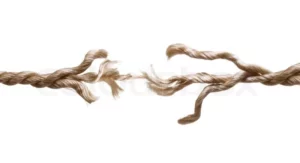 It’s that time of year again — when many of us find ourselves sneezing and blowing as the flowers and grasses bloom. It’s important to remember, before you rush to the drug store, that homeopathy might be the answer you really need.
It’s that time of year again — when many of us find ourselves sneezing and blowing as the flowers and grasses bloom. It’s important to remember, before you rush to the drug store, that homeopathy might be the answer you really need.
Many years ago, before I used homeopathy, my spring and summer allergies were pretty bad and getting worse. I was beginning to resort to allergy medicines and nasal sprays — all merely suppressive and, I know now, likely to make my overall health and even my allergies worse. My spring sneezing, congestion, and worst of all, itchy palate, improved dramatically and immediately after I began homeopathic treatment with a good constitutional remedy. In fact, this amelioration of my allergies was one of my first personal striking experiences of the power of homeopathy.
Since allergic reactions are really broad constitutional symptoms of the body, treatment with a good constitutional remedy — addressing all the symptoms of the entire symptom complex: emotional, mental, and physical — is usually the best and most deeply curative approach to allergy treatment. Indeed, the remedy that helped me with my allergies was by no means one would think of for the treatment of allergies. But it helped me and my vital force, which then helped me to be less susceptible to allergens and able to react to them in a more balanced manner.
That said, there are more targeted approaches to allergy treatment that do work — in fact, scientific studies have repeatedly proven that they work. In general, the approach is to give the offending allergen (for example, pollen), in a potentized, highly dilute dose. The approach is called “isopathy”. Remember, there is not even a molecule of the allergen in the remedy, it is merely the energy of the allergen.
While many liken the use of homeopathy to the allopathic use of allergy shots (which directly inject diluted material doses of the allergen, along with who-knows-what toxic adjuvants, directly into the body tissues), the homeopathic approach is safe and non-invasive. Still, the success of allergy shots is testimony to the fact that even the crudest and most toxic application of the homeopathic principle can be effective at some level.
Two studies of the isopathic use of allergens in potency were described in my book Impossible Cure. Both were conducted by Scottish homeopathy David Reilly, MD.
1. “David Reilly, MD, and colleagues in Glasgow performed a double-blind controlled trial of a 30c potency of house dust mite, given to dust-allergy sufferers. In the homeopathic group 77% showed an improvement compared to only 33% showing an improvement with placebo. The study was supervised by a consulting respiratory physician who recruited the patients for the study.” [Reilly, D., M. Taylor, N. Beattie, et al., “Is Evidence for Homoeopathy Reproducible?



